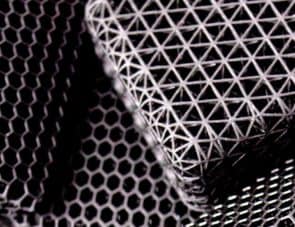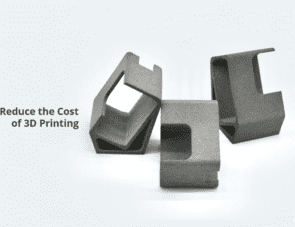Technology Description
Carbon DLS™ (Digital Light Synthesis) is a 3D printing technology that uses a combination of Continuous Liquid Interface Production (CLIP) and programmable liquid resins. CLIP uses photo polymerization to produce solid objects with smooth sides. In this production method, ultraviolet light (UV) is used to solidify a photosensitive resin into the desired shape or geometry from a CAD 3D model.
The process uses a pool of liquid photopolymer resin. A part of the bottom of the pool is made transparent to allow passage of the UV light. A Digital Micromirror Device (DMD) is used to reflect the light. DMD is a dynamic mask that consists of microscopic sized mirrors arranged in a matrix on a semiconductor chip. Rapid toggling of these mirrors between lenses directs the light at the pool of the resin, defining the coordinates where the resin solidifies within the given layer.

The cured part rises slowly allowing the resin to flow in beneath it and maintain contact with the bottom of the part. A persistent liquid interface is created below the resin by an oxygen permeable membrane. This prevents the resin from getting to the window. This process is continuous and can produce objects up to 100 times faster than other commercial 3D printing methods.
Carbon DLS is capable of producing parts with astonishing mechanical properties and excellent surface finish. Geometries previously considered impossible can be easily manufactured with this technology. However, to fully utilise the benefits of this technology, your 3D model has to be optimised for the process. The following are considered essential when designing for Carbon DLS™ 3D printing.
Build Area
This refers to how large an object should be in order to be printed. The build volume is a function of the resolution of the projector used. The closer the projector to the window, the higher the resolution which in turn reduces the build area. Typically, the standard build area is 188 x 117 x 325 mm. However, parts with dimensions 50.8 x 25.4 x 76.2 mm offer the best economy of scale in production.
Tolerance and Clearance
For your 3D parts to be printed accurately, it is essential to use the right tolerance during the design process. Tolerances depend on a variety of factors including:
- The size of the printer
- Restrictions from printing materials
- Limitations from the printer bed
The quantities to provide tolerance are: layer thickness, wall thickness, detail, clearance, raw size, and accuracy. The table below gives the general tolerance values:
| Parameter | Tolerance |
| Layer thickness | 0.001 mm |
| Clearance | 0.6 mm |
| Accuracy | +0.3% or -0.3% |
| Wall thickness | 1.0 mm |
Build orientation
This should be done to optimize stand-out features or prominent details while reducing height and the need for support. However, additional support is required if it helps to reduce the probability of failure during printing.
Support
The support structure should be made of the same material as the object. It should be shaped in a way that eases removal by hand and minimizes post-processing. However, in materials like EPX and elastic polyurethane, supported areas may be more visible due to limitations in post-processing options.
Use of Fillets
Fillets help reduce acute stress on parts and invariably ensure smooth build between features. Therefore, its use is highly recommended.
Summary
At Xometry Europe, through our vast network of manufacturers, we carry out Carbon DLS™ 3D printing for various materials. After optimising your model using these tips, head over to our instant quoting platform to upload it and receive a quote in seconds.


